Food for the Soul: Isabella Stewart Gardner – Women & Art Series 14
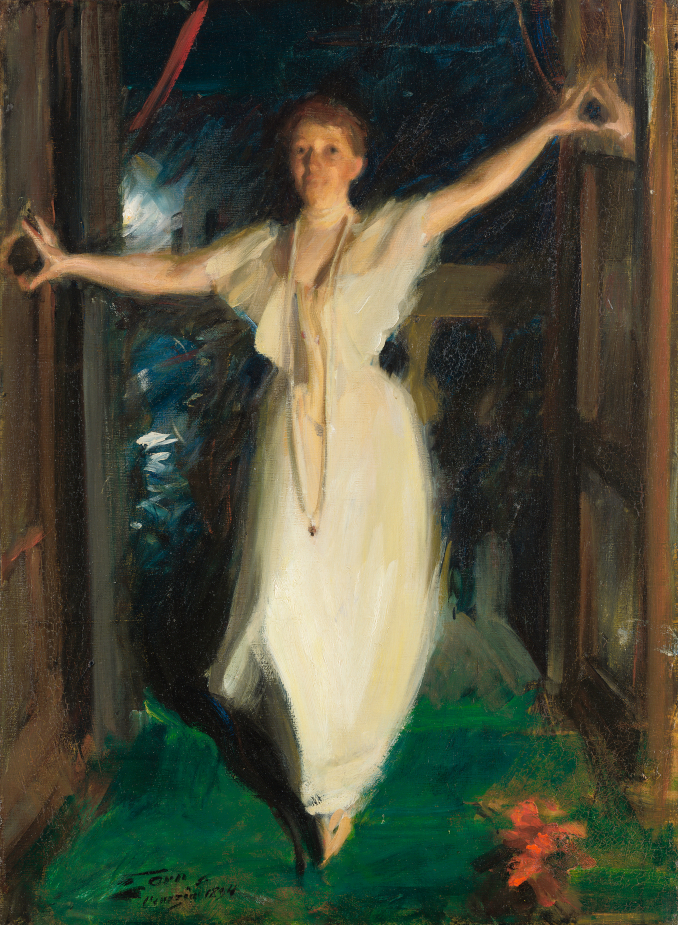
By Nina Heyn – Your Culture Scout
March 18, 1990 was the St. Patrick’s Day holiday in Boston. The streets were full of revelers, and the police had their hands full with traffic control. Two mustachioed policemen who knocked on the doors of the Isabella Stewart Gardner Museum on Fenway Street were readily admitted by two night guards when the policemen announced they were checking on some disturbance. The guards were not much in the way of guards anyway—one of them was a music school student moonlighting in the evenings as a security guard. The cops were not really cops either—as soon as they were admitted to the museum, the robbers tied up the two guards and started hacking at picture frames. By the end of that night, three of the most famous paintings in the world—Rembrandt’s The Storm on the Sea of Galilee, Vermeer’s The Concert, and Manet’s Chez Tortoni—along with ten other major works of art had disappeared. To this day, the largest and most damaging art theft of the 20th century has never been solved and the paintings have never been recovered, nor has the mystery of who ordered the well-planned heist ever been revealed.
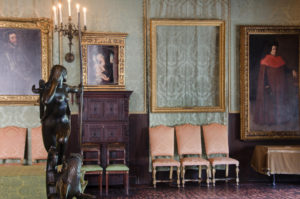
It is unfortunate that for many current and future museum patrons, the name of Isabella Stewart Gardner is now associated more with the daring 1990 heist than with the story of the unusual woman behind one of the most sophisticated fine art collections in America.
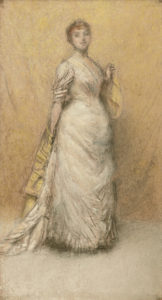
Gardner started out in the conventional, patrician circles of the East Coast society of the Victorian era as a young bride, married off in 1860 to the scion of the Boston Brahmins, John “Jack” Lovell Gardner, Jr. A series of misfortunes—the death of her two-year-old son, a miscarriage that rendered her unable to have more children, a severe depression, and a marriage that descended into a union of convenience—contributed to the transformation of this patrician lady into “Mrs. Jack”—an eccentric, scandalizing, formidable patroness of the arts and artists.
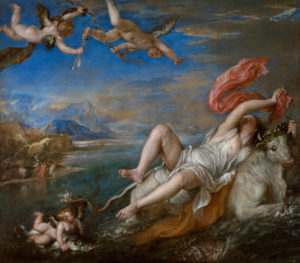
Paradoxically, one way to tell the story of this woman who was more colorful and willful than anyone in her world of Boston high society is through the relationships she had with men in her life. This does not mean that she was their victim or even much of a dependent—these were men, including her father and her husband, who either supported her or who were dominated by her, financially or psychologically. Her father David Stewart was a wealthy businessman from whom she inherited a fortune that was independent from her husband’s property and which enabled her to spend freely on her art hunts. “Jack” Gardner, her husband, was very indulgent of his wife’s eccentricities (such as walking around the city streets with a tame lion) and her friendships with people who traditional Boston society would not normally accept (for example, many men who were either gay, Jewish, or impoverished artists—or all three at the same time).
Above all, though, Gardner’s intellectual life was influenced by three men outside her family circle—all three of whom were cultured, refined, and towered over others in their respective fields. They may have all profited from their association with Gardner and her financial support, but they also gave her in return the princely gifts of artistic immortality.
First, there was “the Writer.” Gardner’s deep and complex friendship with Henry James resulted in her being portrayed in his writings (most notably in the novel The Wings of the Dove). James also provided her with a long-standing opportunity for intellectual development, as evidenced in their correspondence, as well as a crucial introduction to another key male figure in her life: “the Painter.”
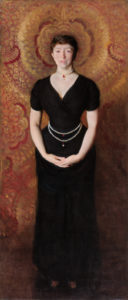
John Singer Sargent. Portrait of Isabella Stewart Gardner, 1888. Oil on canvas. Isabella Stewart Gardner Museum, Boston. Photo: Wikimedia Commons
John Singer Sargent, an American expat who spent more time in Venice or North Africa than on the East Coast, met Gardner in London in 1886. He was already famous and infamous at the same time for painting the scandalizing Portrait of Madame X. Gardner, with her penchant for creating an outraged buzz in high society, would have liked nothing more than to be the subject of an equally shocking likeness from Sargent. However, this commission had to wait for both of them to be in Boston at the same time, since they tended to be busy roaming the world, from Asia (Gardner) to Africa (Sargent). When she finally posed for him in 1887, the result was startling. Sargent’s Portrait of Isabella Stewart Gardner showed her in an indecently deep décolleté, with priceless pearls casually serving as a belt and with her head surrounded by a radiating halo like a Byzantine Madonna. The picture was exhibited only once, at Sargent’s first American one-man show in Boston in 1888. After that, Gardner’s husband, usually more philosophical about his wife’s ebullience, forbade the portrait to be displayed during his lifetime. He would not even assent to lending it for a Salon exhibition in Paris. However, not only did Sargent remain Gardner’s artistic friend and a house guest (he painted the famous double portrait of Gretchen Osgood Warren and her daughter in one of the rooms of Fenway Court) but also her portraitist.
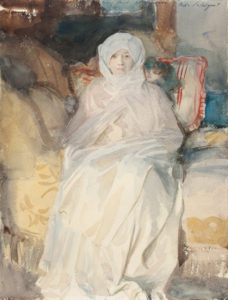
Sargent’s last portrait of his patroness and friend, Mrs. Gardner in White, was painted in 1922, a couple of years before Gardner’s death. It shows her as an ethereal being, all swaddled in white muslin gauze shawls and almost fading into the bedding. This is a painful but truthful image of a grande dame slowly passing away.
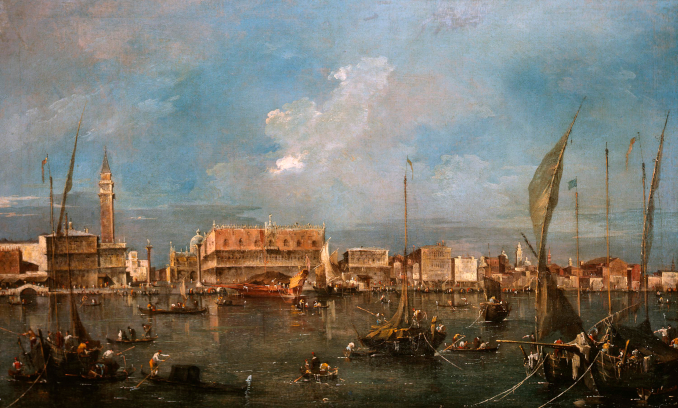
The third man who changed Gardner’s life and her place in history can be dubbed “the Collector.” Bernard Berenson was a Harvard-educated Jewish historian who made it possible for his friend and client to assemble an astounding treasury of Old Masters. Berenson, whose professional knowledge was unsurpassed at the time (he would research the provenance and authenticity of artworks using modern methods such as paint analysis and style comparisons), was also a shrewd dealer who managed to trump the collecting efforts of such competitors as the Rockefellers, the Morgans, William Randolph Hearst, and Henry E. Huntington—all the American billionaires who were actively shopping for European art treasures with pockets much deeper than Mrs. Gardner.
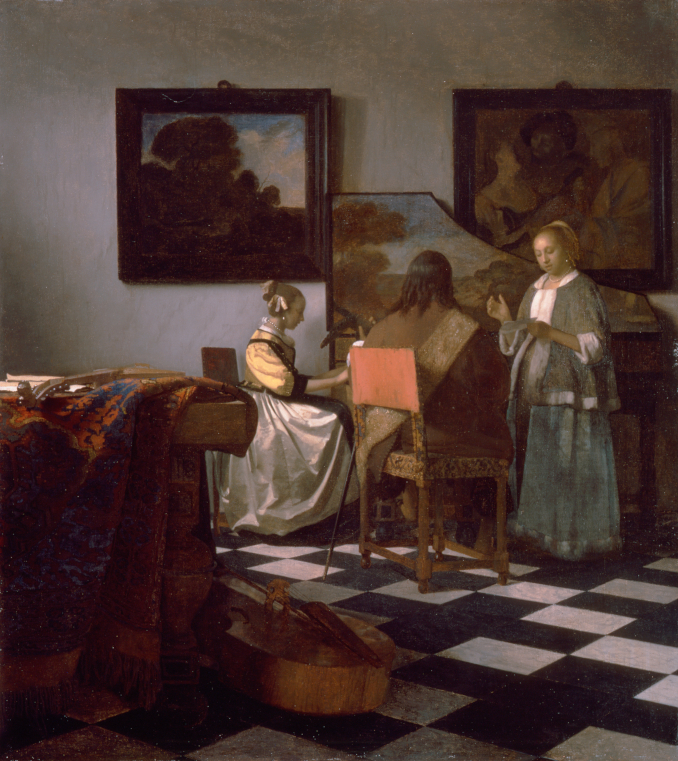
Gardner had already entered the art-buying arena with her 1892 purchase of Vermeer’s The Concert, beating out bids from the Louvre and the National Gallery. She soon topped this auspicious debut when Berenson started assisting her in locating, authenticating, and securing some unique gems of European painting. In the 1890s, the art of art research, so to speak, was still in its infancy. Louisine Havemeyer, the wife of a “sugar baron” and another rich collector, assembled at the same time a much more expensive trove of Titian and Raphael artworks, advised by Mary Cassatt. However, Cassatt, while a great painter, was clearly not a Renaissance art researcher, and her counsel did not protect Mrs. Havemeyer from a disaster—most of the Italian “Old Master” paintings she collected turned out to be fakes.
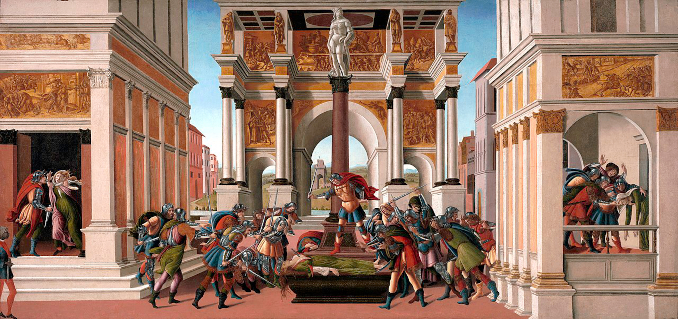
One of the first paintings acquired by Gardner with Berenson’s guidance was Botticelli’s The Tragedy of Lucretia. For followers of the Italian Renaissance, a typical Botticelli work is a sinuous Madonna or perhaps an equally sweet-faced Aphrodite or Primavera. Lucretia is a different type of Botticelli painting from a group of religious or historical scenes that were visually inspired by architectural discoveries of antiquity. It is also a strong statement about revolt against tyranny—not the usual mythological or religious subject of the majority of Botticelli’s works. It is, therefore, not only beautiful and visually arresting—it is also an important milestone in the artist’s legacy. This spectacular Gardner acquisition was followed in short order by a great Rembrandt self-portrait, Titian’s The Rape of Europa, and Francesco Guardi’s View of the Riva degli Schiavoni. In fact, between 1894 and 1903, Gardner spent most of her fortune—close to nine million in 1900s dollars—on exquisite and rare art.
By the time Gardner launched the construction of her museum, she was in her fifties—the age at which most women of her time would already have been viewed as matronly grandmothers in their sunset years. Gardner was not a grandmother since she had no children, she hardly looked matronly, and from 1898 on, she had no husband anymore. What she did have was a determination to devote all the time and funds she had to the creation of a place of wonder such as Boston had never seen.
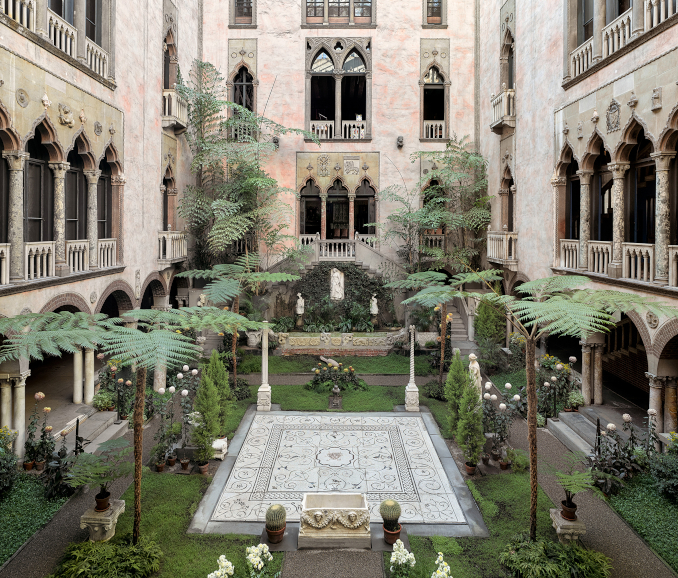
Fenway Court was entirely Gardner’s vision. With the help of architect Willard T. Sears, she imagined and created a version of a Venice palazzo. The exterior fits the fickle Boston weather—muddy-colored brick and little external decoration. The enchantment is reserved for the interior. Once you enter Gardner’s world of art, you are greeted by columns, mosaics, and lattice stonework surrounding a glass-covered garden of flowers, ferns, and southern plants. Inside, room after room is arranged thematically, showcasing art masterpieces, sculptures, and tapestries, all in dialogue with each other.
Gardner chose to design the interiors around the art she carefully arranged, rather than just fill the existing walls with pictures. A case in point is one of Sargent’s early masterpieces called El Jaleo. This theatrical composition shows a Spanish dancer in a white underskirt that catches the light during the woman’s turn. It is a beguiling composition of light and shadow. The painting was originally purchased by Bostonian statesman Jefferson Coolidge, and it took Gardner years to convince Coolidge to part with it.
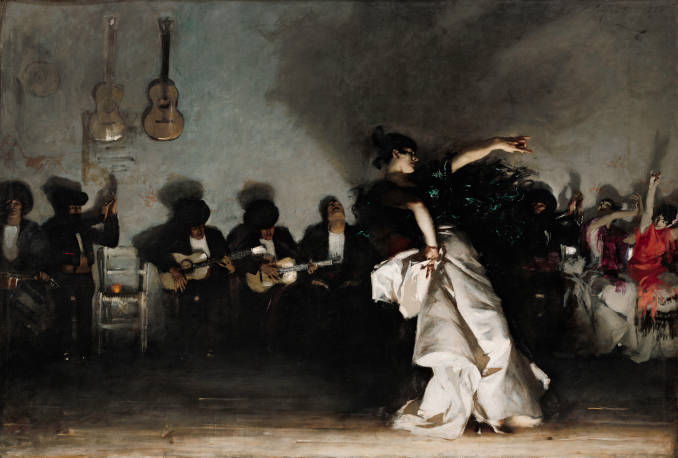
The clincher was the way Gardner designed a space for the painting in her Spanish Cloister. Not only did she have a Moorish-style niche built for the painting, but she also devised side lighting to highlight the dancing scene. In 1914, when she finally acquired the painting, electrical lighting was not yet ubiquitous, much less the idea of lighting an art object from underneath.
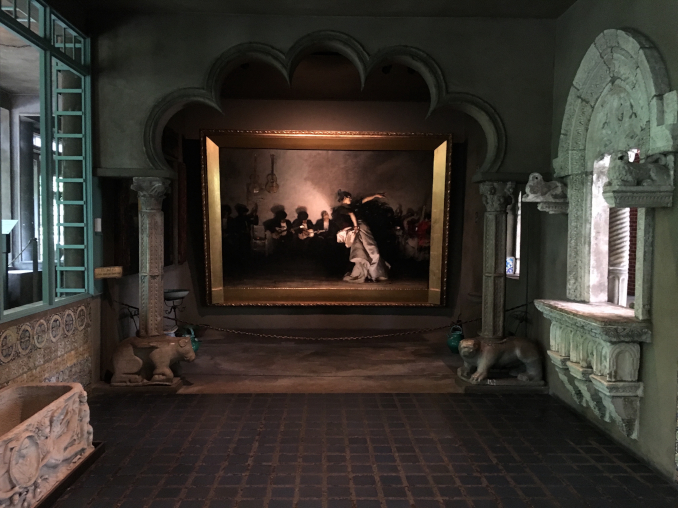
Gardner’s life cannot be properly judged from the perspective of the 21st century, with its emphasis on political correctness and inclusivity, its feminist overtones, and the frequent condemnation of anything to do with social or material privilege. Gardner was the product of a different era, when the American high society of the Belle Époque was run by wealthy European descendants of patrician families. They were refined, and they loved art, but they were also very restricted by convention. It is what Gardner achieved despite this rigid society that counts today. She could easily have lived like every other woman who married into a Boston Brahmin family—perhaps becoming the patron of an occasional exhibition or artist for her salon—but instead she created one of the most accomplished and original museums in North America. Despite the barbarous 1990 theft, the Isabella Stewart Gardner Museum remains a unique depository of fine art in the U.S.
